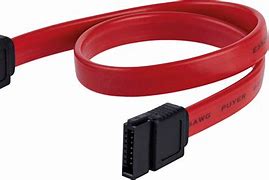Folded and designed by Ivan Danny Handoko
Made from 50x50cm Embossed Paper
Wayang golek is a traditional puppet from Indonesia. Here, I took a Gatotkaca as a character for the Wayang Golek, since there are a lot of characters available. I designed this model on a special event, which is the First Origami Convention in Indonesia on 2015 in Surabaya.
*If you glue a stick at his hand, you can play the puppet (by moving the stick around)
CP : Available on my photostream
Wir verwenden Cookies und Daten, um
Wenn Sie „Alle akzeptieren“ auswählen, verwenden wir Cookies und Daten auch, um
Wenn Sie „Alle ablehnen“ auswählen, verwenden wir Cookies nicht für diese zusätzlichen Zwecke.
Nicht personalisierte Inhalte und Werbung werden u. a. von Inhalten, die Sie sich gerade ansehen, und Ihrem Standort beeinflusst (welche Werbung Sie sehen, basiert auf Ihrem ungefähren Standort). Personalisierte Inhalte und Werbung können auch Videoempfehlungen, eine individuelle YouTube-Startseite und individuelle Werbung enthalten, die auf früheren Aktivitäten wie auf YouTube angesehenen Videos und Suchanfragen auf YouTube beruhen. Sofern relevant, verwenden wir Cookies und Daten außerdem, um Inhalte und Werbung altersgerecht zu gestalten.
Wählen Sie „Weitere Optionen“ aus, um sich zusätzliche Informationen anzusehen, einschließlich Details zum Verwalten Ihrer Datenschutzeinstellungen. Sie können auch jederzeit g.co/privacytools besuchen.
Pay duties and fees at checkout
eBay International Shipping offers the option to prepay duties and fees at checkout. If you pay now, the total cost is fixed.
There’ll be no extra processing time at the customs and no additional import charges upon delivery.
What are import charges?
Import charges includes duties, processing fees, and taxes on imports.
Duties are a type of tax collected on imports by a country's customs authorities. Usually, the duties vary depending on the item and its value. In different countries, this tax may be called a customs duty, import duty, or tariff.
Carriers and customs authorities may charge additional processing fees.
Belanja di App banyak untungnya:
Belanja di App banyak untungnya:
Belanja di App banyak untungnya:
Dimensions: W: 22 x D: 22 x H: 81 cm
Wayang Golek puppet, character: Gatot Kaca Purwa puppet, made by Sundanese puppet carver Abah Suwandi Early 1980s Material: wood, fabric, pearls Origin: Salimah, Bogor (Java, Indonesia)
Indonesian puppet theatre
Wayang golek is one of the traditional Sundanese puppet arts from West Java, Indonesia. In contrast to the wayang art in other areas of Java island that use leather in the production of wayang, wayang golek is a wayang art made of wood. Wayang golek is very popular in West Java, especially in the Pasundan land area.[1][2] Today, wayang golek has become an important part of Sundanese culture.
On November 7, 2003, UNESCO designated wayang the flat leather shadow puppet (wayang kulit), the flat wooden puppet (wayang klitik), and the three-dimensional wooden puppet (wayang golek) theatre, as a Masterpiece of the Oral and Intangible Heritage of Humanity. In return for the acknowledgment, UNESCO required Indonesians to preserve the tradition.[3]
The term wayang golek is the Javanese word, it consists of two words wayang and golek. Wayang for "shadow"[4][5] or "imagination" and golek for "seek". The words equivalent in Indonesian are bayang and mencari. In modern daily Javanese and Indonesian vocabulary, wayang can refer to the puppet itself or the whole puppet theatre performance.
The history of the wayang golek began in the 17th century. Initially, the wayang golek art emerged and was born on the north coast of the island of Java, especially in Cirebon, the wayang used is the wayang cepak in the form of a papak or flat head. According to legend, Sunan Suci used this wayang cepak to spread Islam in the community. At that time, the wayang cepak performance still used Cirebonese in its dialogue. The wayang golek art began to develop in West Java during the expansion of the Mataram sultanate.
Wayang golek began to develop with Sundanese as a dialogue. In addition to being a medium for spreading religion, wayang golek serves to complement Thanksgiving or ruwatan events. At that time the puppet show was still without using sindhen as an accompanist. Wayang golek began using the accompaniment of sinden in the 1920s. Until now the wayang golek continues to develop as entertainment for the community, especially in Sundanese land.
In this wayang golek show, as with other wayang shows, plays and stories are played by a puppeteer. The difference is the language in the dialogue that is brought is Sundanese. The standard and the wayang golek are also the same as wayang kulit, for example in the Ramayana and Mahabharata stories. But the difference is in the character of the clown, the naming and form of the clown have their version, namely the Sundanese version.
In addition to the Ramayana and Mahabharata stories, there are also stories and carangan stories. In this wayangan story, the mastermind makes his story line which is usually taken from folklore or daily life. in the story carangan usually contains moral messages, criticism, humor and others - others. In the story, carangan is not only used to develop the story but also to measure the quality of the mastermind in making the story. In this puppet show besides being accompanied by sinden also accompanied by Sundanese gamelan such as saron, peking, celery, bonang, kenong, gong, rebab, kempul xylophone, drums, and culant drums.
In its development, wayang golek remains one of the traditional arts of the pride of the people of West Java. Proven wayang golek still colors various events such as ruwatan, thanksgiving, and other large events. In addition, some artists continue to develop it with several additional creations to make it look attractive and stay sustainable without eliminating the grip on it.
, collection of Tropenmuseum, Netherlands, before 2003
, collection of Tropenmuseum, Netherlands, before 2003
, collection of Tropenmuseum, Netherlands, before 2003
, collection of Tropenmuseum, Netherlands, before 2003
(Albania), collection of Tropenmuseum, Netherlands, before 2003



